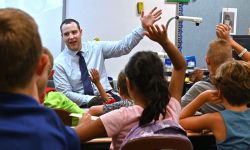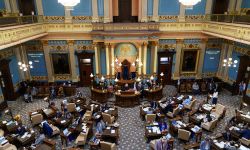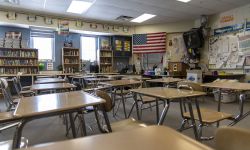How Michigan schools are spending $6 billion in federal COVID relief
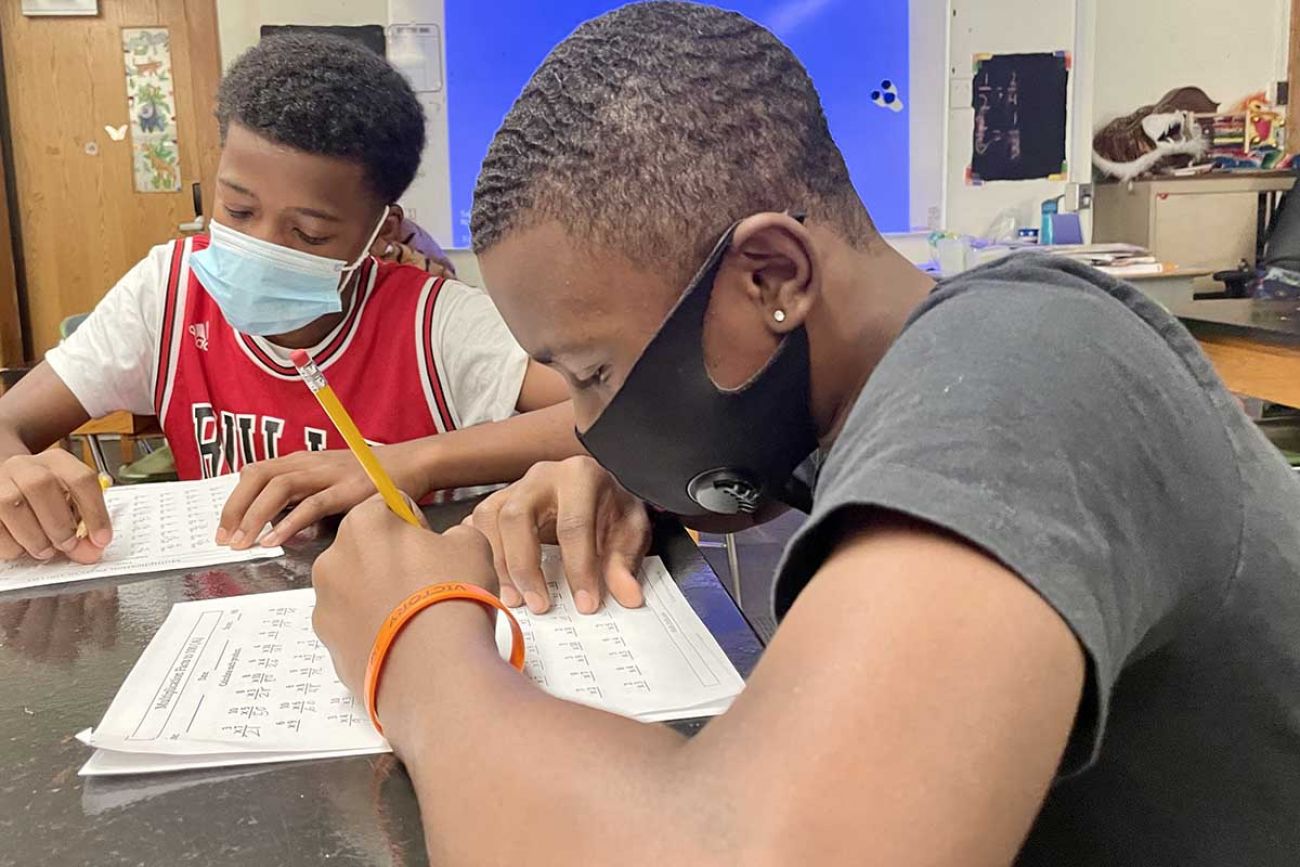
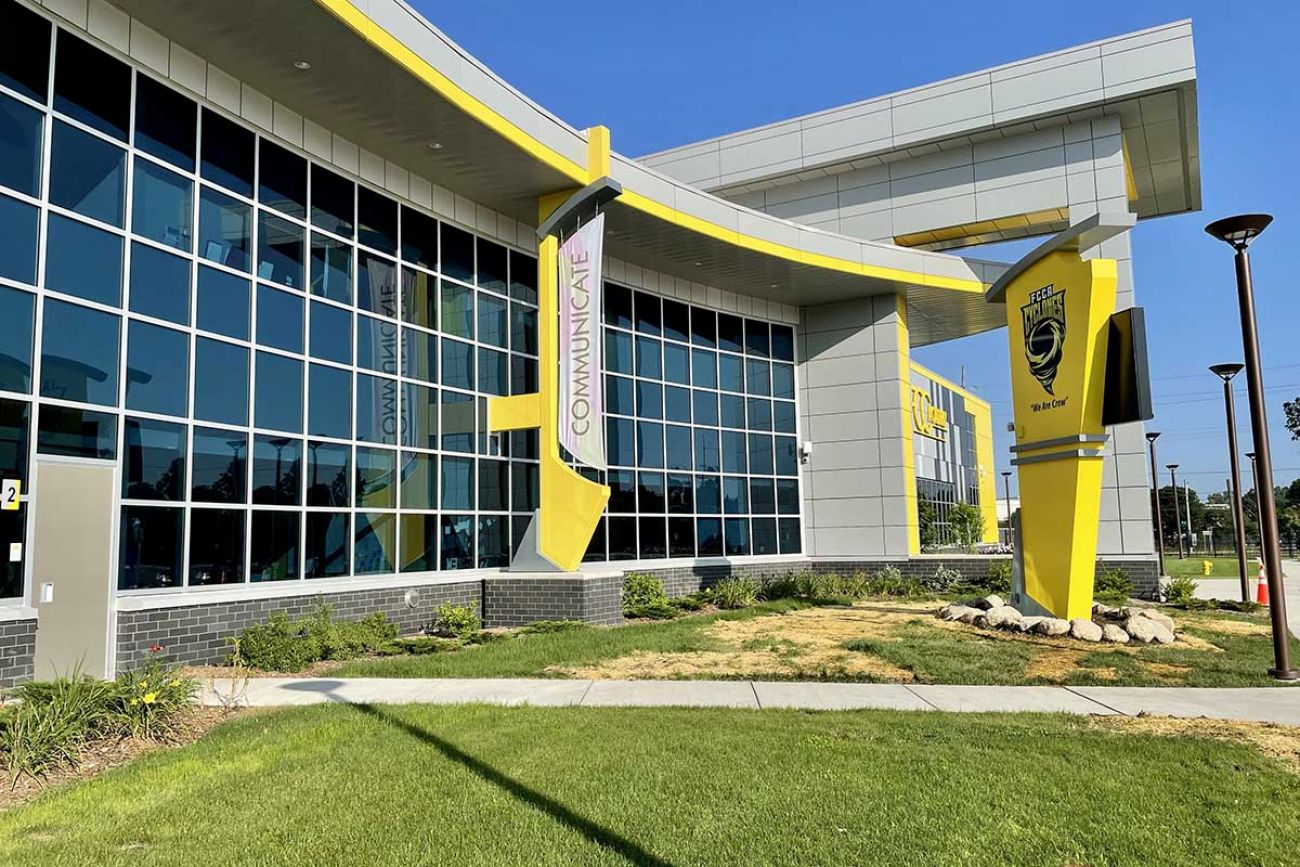
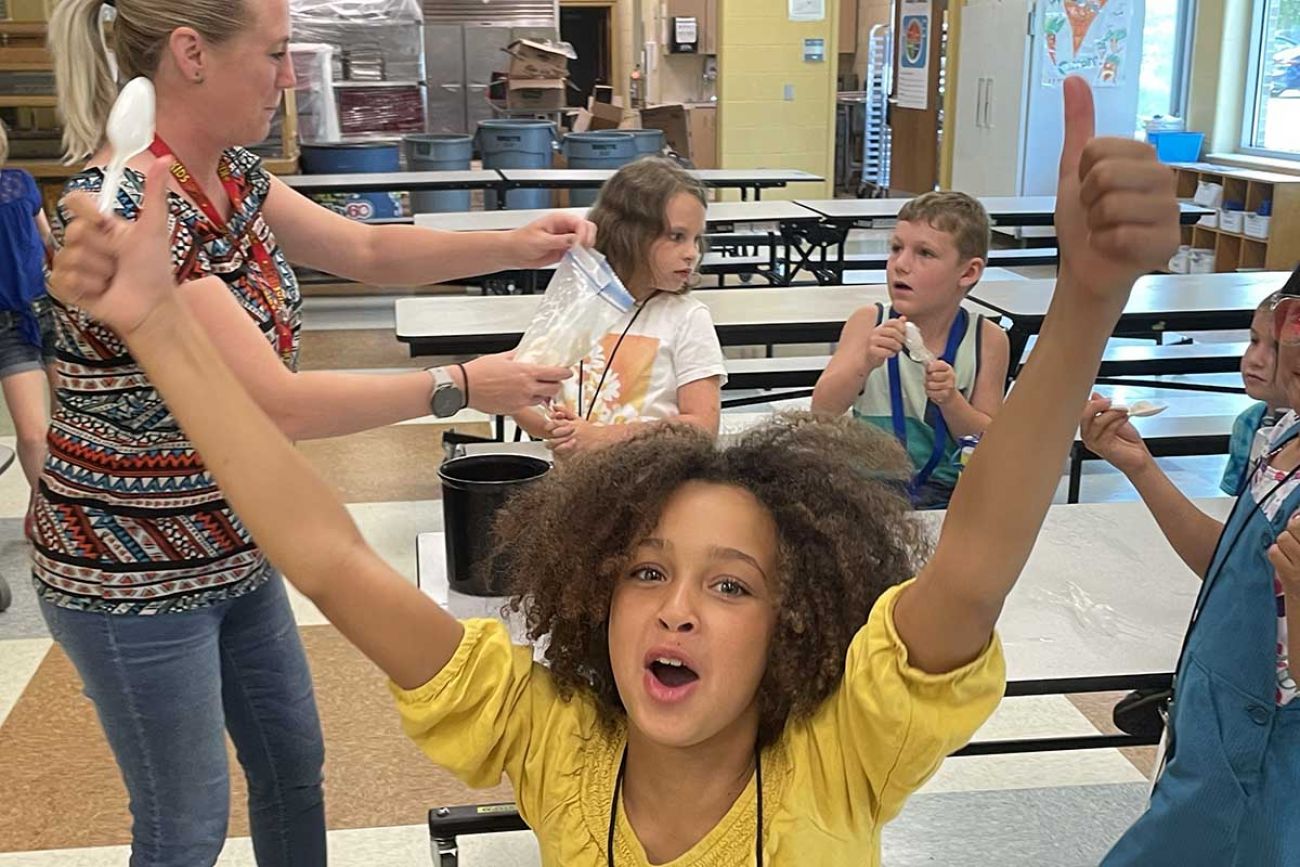
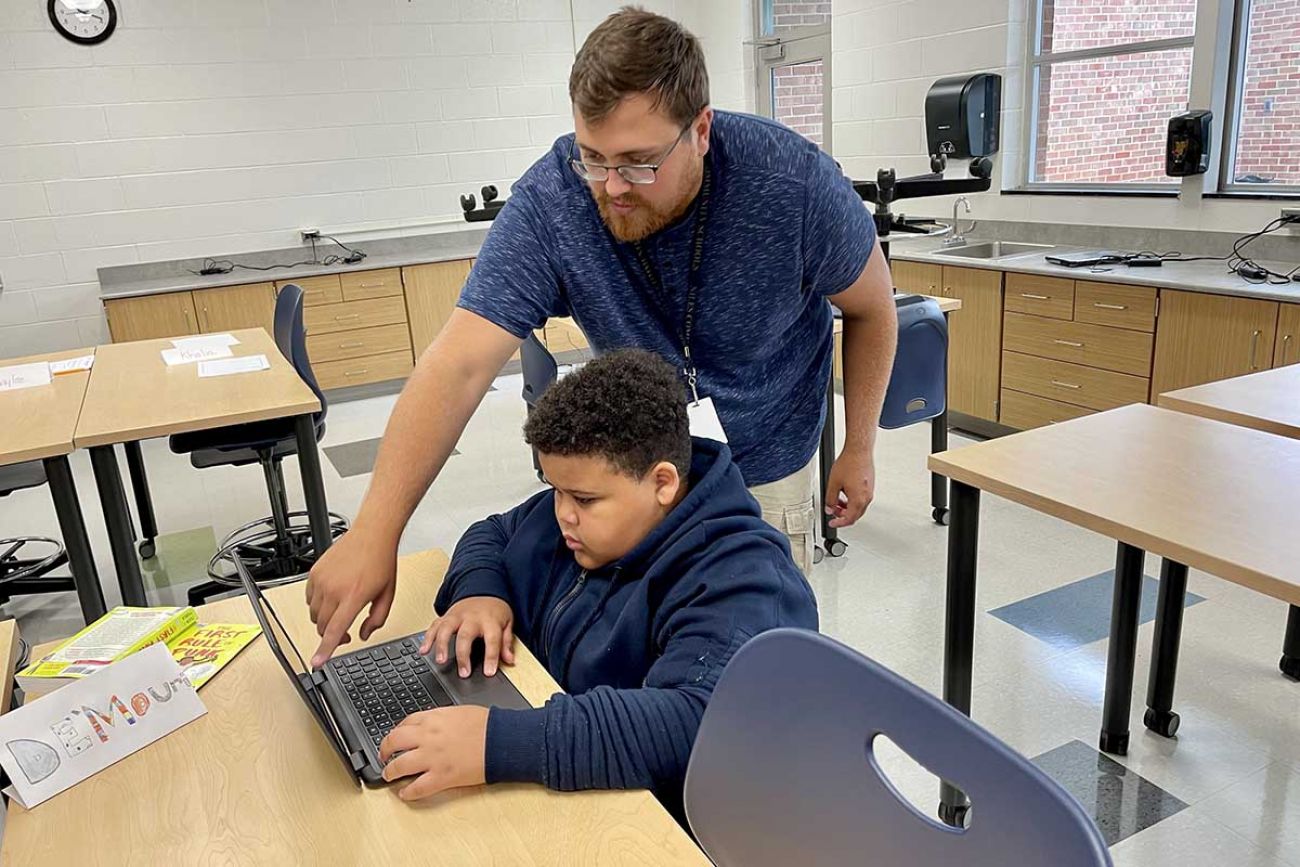
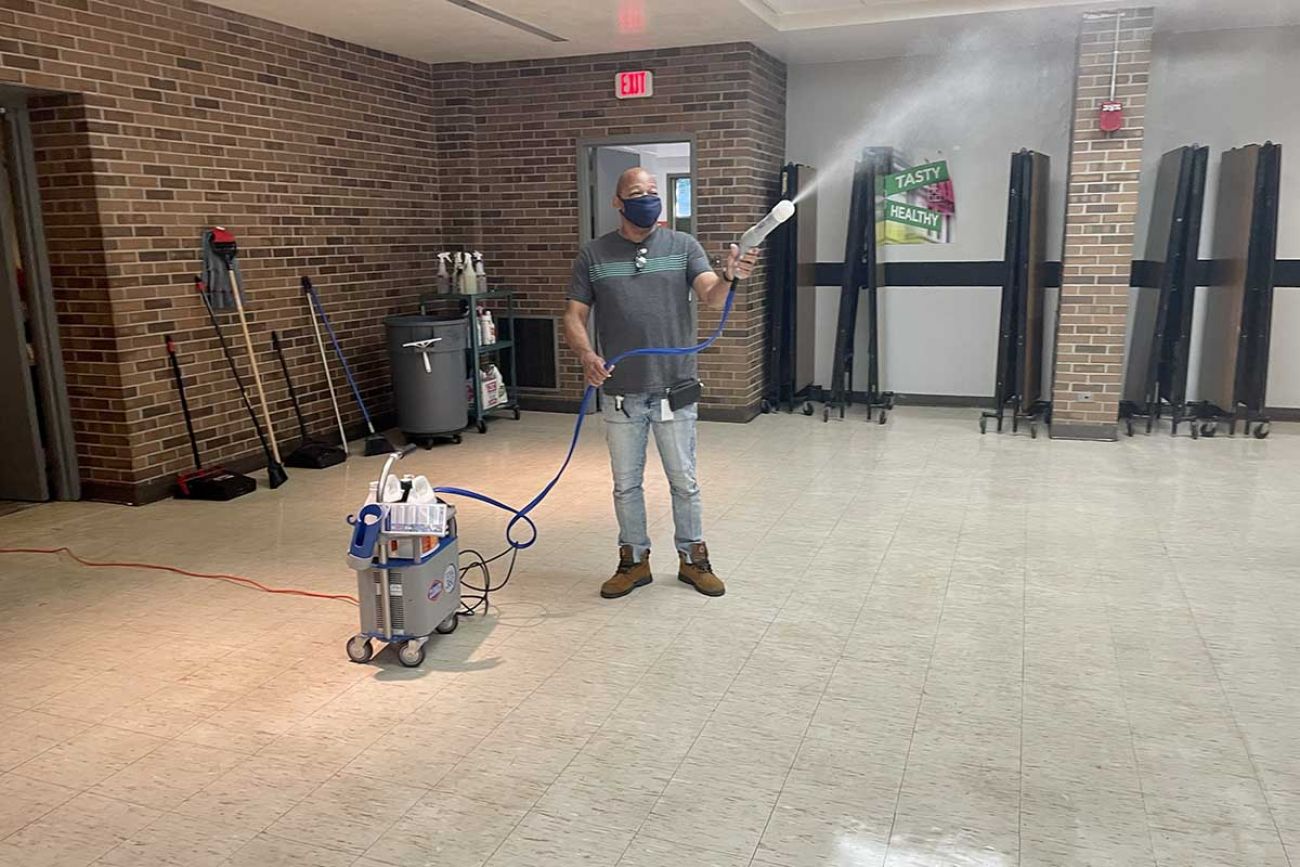
School leaders delivered books to children’s doors, hired tutors, replaced hard-to-clean carpeting and offered more summer school than ever before. Now they’re upgrading ventilation systems, replacing water fountains with more sanitary water-bottle fill stations and adding soap dispensers.
Some are investing in thousands of laptop computers and expanding virtual learning programs in case COVID-19 resurges during the school year. Others, more confident the pandemic is ending, are investing in programs that bolster traditional learning.
Beyond that, a lot of school leaders don’t yet know what they’ll do with the windfall of roughly $6 billion in federal COVID relief coming over three years. It’s the kind of money school leaders never envisioned and know they’ll never see again.
Related:
- Michigan school mask tracker: Find rules in your district
- Michigan schools must teach in-person, get waiver, or lose funding
- Michigan schools can’t fill teacher aide jobs: ‘There are no applicants.’
- Full-time virtual schools expand in Michigan in wake of COVID
That’s why they want to ensure it’s spent wisely, according to interviews Bridge Michigan and Chalkbeat Detroit conducted with leaders in five Michigan communities: Benton Harbor, Flint, Alpena, Traverse City and Niles.
“I don’t want to commit to spending this money on something I’m not 100 percent sure is going to make a difference in the lives of children,” said Eric Lieske, principal and CEO of Flint Cultural Center Academy, a K-8 charter school.
“I need to get these kids back first and I need to get feedback from my staff on what they think they need to make sure we’re impactful,” he said. “I want to see the kids back. I want to see how they’re engaging and how they are emotionally.”
That sounds reasonable to state Board of Education President Casandra Ulbrich.
“When you have a big pool of money like this it makes sense to come up with a very strategic plan,” she said. “It provides the opportunity to be very creative.”
Congress approved $189 billion for the nation’s K-12 schools over three years from the Elementary Secondary School Emergency Relief (ESSER) and Governors’ Emergency Education Relief funds. The most funding is targeted for districts with high poverty and large populations of students of color, English language learners, students with disabilities, migratory families and other groups most affected by the pandemic.
Michigan was awarded about $6.1 billion over three years. Administrators across the state who spoke with Bridge and Chalkbeat suggested it may take all of those 36 months to decide how to spend it. School boards and superintendents have wide discretion. The money can be used to support safe, in-person instruction, to recover learning loss during the pandemic, or to support the academic, social and emotional needs of students.
That kind of money also comes with expectations of higher achievement.
“I get that. I should be held accountable,” said Dan Applegate, superintendent of Niles Community Schools. “Our scores should get better. I’ve got no issue with that.”
The biggest challenge, he and others said, will be finding and attracting high-quality teachers when every other school district in the country now has the money to compete for them, too.
But test scores aren’t everything, school administrators across the state said.
People who expect dramatic increases in test results might be underestimating the severity of the pandemic’s disruption on education, said Katharine Strunk, director of the Education Policy Innovation Collaborative and a professor of education policy at Michigan State University.
“There’s real learning recovery that needs to happen,” she said.
Early data indicates student achievement has been significantly disrupted during the pandemic, particularly for younger students, students of color and those from low-income families.
“Kids didn’t learn normally for a year and a half, so how do we accelerate learning so they’re basically where they’re supposed to have been?” Strunk said. “And it’s not just about academic achievement; it’s about social and emotional learning. I think kids can catch up. I think it will take a lot of really strategic effort.”
Bridge Michigan recently visited five districts across the Lower Peninsula to see how they’re spending the unprecedented funding. Here’s what we found:
In Benton Harbor, beefed up summer school and drones
The first thing students see when they enter Benton Harbor High School is an image of themselves reflected back on an eye-level tablet in the entryway. Next they hear an electronic voice instructing them to “please come closer” while it measures temperature and warns, if necessary, “please wear mask.”
Early arrivals might see custodian Louis James spraying a thin mist of disinfectant over all surfaces using one of the $5,000 electrostatic disinfection machines the district purchased with COVID relief funds.
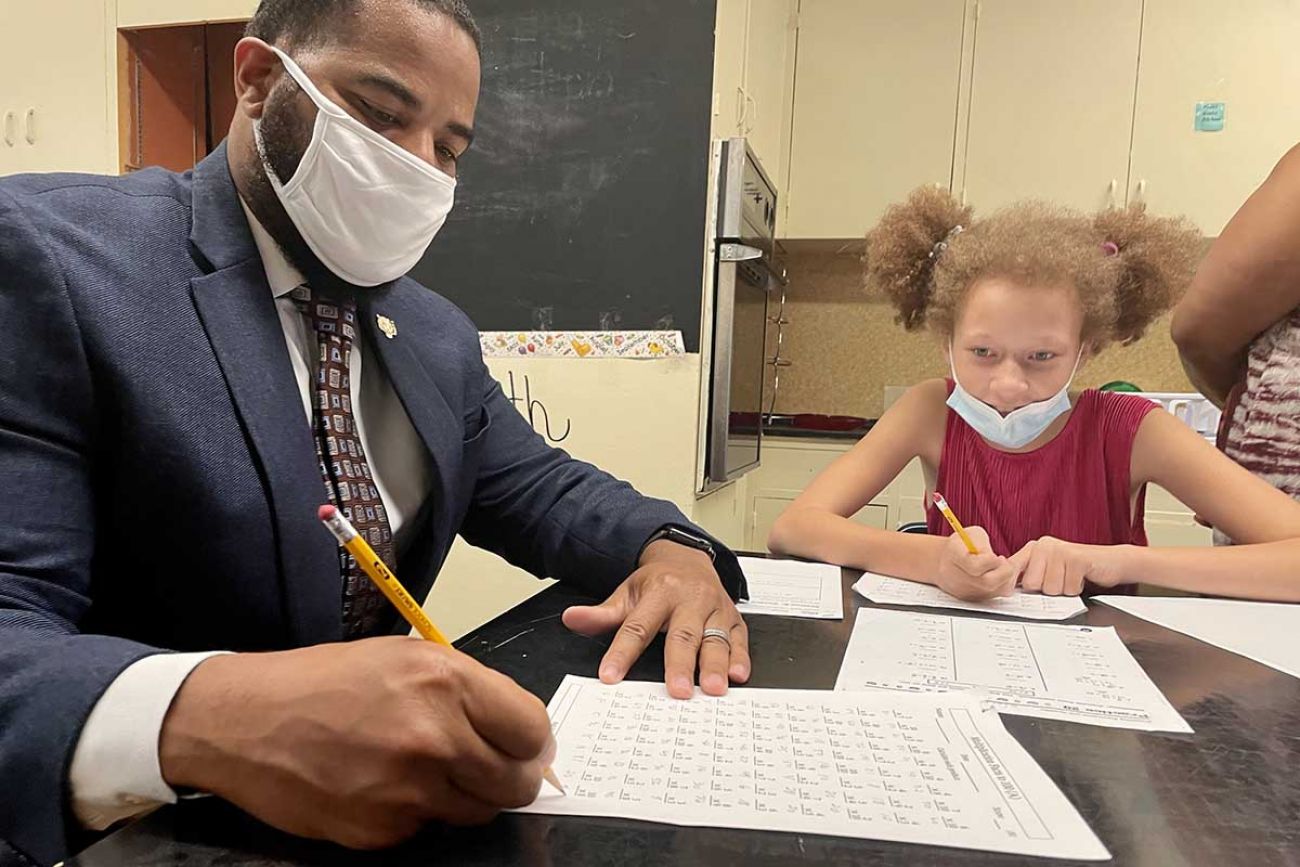
It’s immediately clear that safety is a priority for Benton Harbor, which is receiving $29,000 per pupil in federal funding, second only to Flint Public Schools.
In a district where 42 percent of families live in poverty, 16 percent of parents never finished high school, and some buildings are 100 years old, the needs here are high. But so are the goals of Superintendent Andraé Townsel, who arrived a year and a half ago with a mandate to turn around a troubled district that had low test scores, high debt, declining enrollment and a looming threat of closure.
He arrived a few weeks before the pandemic got a toe hold in Michigan and launched the district into the kind of turmoil he couldn’t have predicted. Equally unimaginable was the extra $46.7 million — almost double the district’s annual budget — he would soon have to turn around the struggling, cash-strapped system.
“Our students are going to have more structure, more materials, more enhanced curriculum, more resources such as computers, cleaner facilities, safer facilities, more extra-curricular activities and a wealth of supports all the way around,” Townsel said.
One place Townsel invested COVID relief funds to minimize learning loss is summer school — tripling the teaching staff, extending the program two weeks and doubling enrollment. Students spend mornings focused on math and reading and afternoons on creative activities such as photography, culinary arts, vocal music, jewelry making and stop-action animation.
“It’s still basically tied into our math and science, and through the day they also get a great dose of (English language arts),” said Mike Gillespie, an athletic coach who is co-teaching a summer school math class at Fair Plain Middle School.
Around him, students showed off beaded bracelets they had made and talked about how they measured ingredients for orange smoothies.
“We wanted to do summer school like this for years but didn’t have funding,” Chief of Schools LaWanna Shelton said. “Thanks to the additional funds, we very comfortably planned the best for our kids. There wasn’t a limitation. … We weren’t tied down or held back from being creative and innovative.”
That innovation extends into the school year, too, when students will be able to enroll in new programs including one that will use drones to teach technology.
The district also invested in laptops for every student, wireless hotspots, textbooks, school supplies, counselors, tutoring and professional development that will set up staff to address student needs that were exacerbated during the pandemic.
“Our goal is to focus on climate and culture in addition to curriculum and instruction,” Townsel said.
Flint charter adds staff to help students catch up
William Lewis used a red plastic ruler and a chubby stick of sidewalk chalk to draw precise shapes on the ground — a 9-inch square and 10-centimeter equilateral triangle.
Without federal funding, Flint Cultural Center Academy wouldn’t have offered summer school and William would have been home playing with his little brother.
“I’d rather be here in summer school so I can learn. I’m having fun doing this right now,” the 7-year-old said as he studied his ruler to decide whether to use the centimeter or inch side.
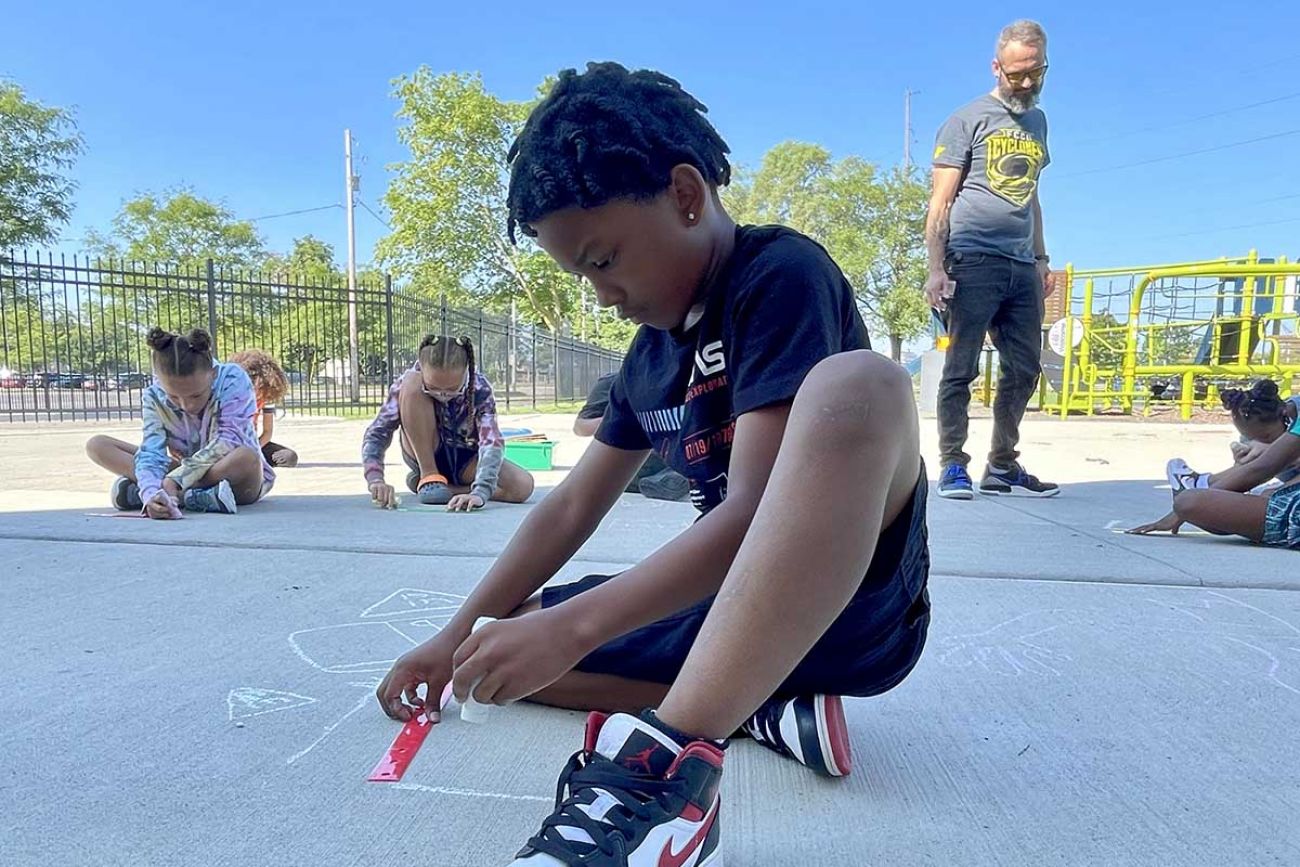
Nearby, teacher Katie Simpson gave the next set of instructions to her third graders.
“You’re going to really have to think because this might be tricky,” she said. “The top and the bottom of the rectangle are going to be 11 inches and the sides need to be 7. Make sure you use the inch side, and we start at zero because he’s our hero.”
There will be other heroes at school next year, too, because of ESSER funding.
Lieske, the charter’s principal and CEO, is using ESSER money to add staff including a guidance counselor and a reading interventionist to help students struggling to return to school — particularly the 28 percent of students who learned remotely the past year.
The charter school opened two years ago in a new building already outfitted with ventilation systems and technology that schools in places like Benton Harbor lack.
Flint Cultural Center Academy has been allocated $3.1 million over three years, or about $3,700 per student, in federal COVID relief funds.
“We’re doing everything we can to respond to the trauma families, kids and staff experienced” during the pandemic, Lieske said. “I wish we could say we’re fully prepared but that would not be an honest answer. I do think we’re working hard to make sure we have the right staff in place and the right protocols in place.”
One thing that will help is the hiring of a “COVID responder” whose salary is funded through federal relief dollars.
“He was the go-to person if I had a report of sick kids or staff not feeling well. We made sure staff had a person to go to and that families knew that this person was going to” coordinate an appropriate response, Lieske said.
Unlike some other administrators who use the federal funds to bolster virtual learning, Lieske is all-in on in-person learning. Unless a dramatic coronavirus resurgence forces school closures, Lieske will have his 450 elementary and middle school students in the building every day.
After all, the whole point of the two-year-old charter school is to connect students to active, hands-on learning at arts and cultural organizations in the neighborhood. For example, students take music classes through the Flint Institute of Music, visit the Longway Planetarium for science lessons, and regularly visit the Flint Cultural Center, which is connected to the school by a walkway.
Alpena boosting professional development to help students
Preston Wiser dripped spots of pink paint onto black paper he laid inside a plastic salad spinner. Then he made his prediction: “Maybe the whole paper will be filled with the same color or maybe it will turn into a big spiral.”
Preston, 9, pumped the mechanism of the household device a dozen times with all his might and waited to see what centrifugal force would do. When the spinning stopped he peered inside to find most of the paint had settled into a pink blob on one side of the paper.
“Heavy on one side. That’s not what I would have hypothesized on that,” instructor Justin Christiansen-Cooper told him as the next student tested her own hypotheses using all four available paint colors.
The summer camp, which blends art with science, technology, engineering and math, is an ESSER-funded partnership between Alpena Public Schools and Art in the Loft, a nonprofit that offers a gallery, performances and hands-on art programs for all ages.
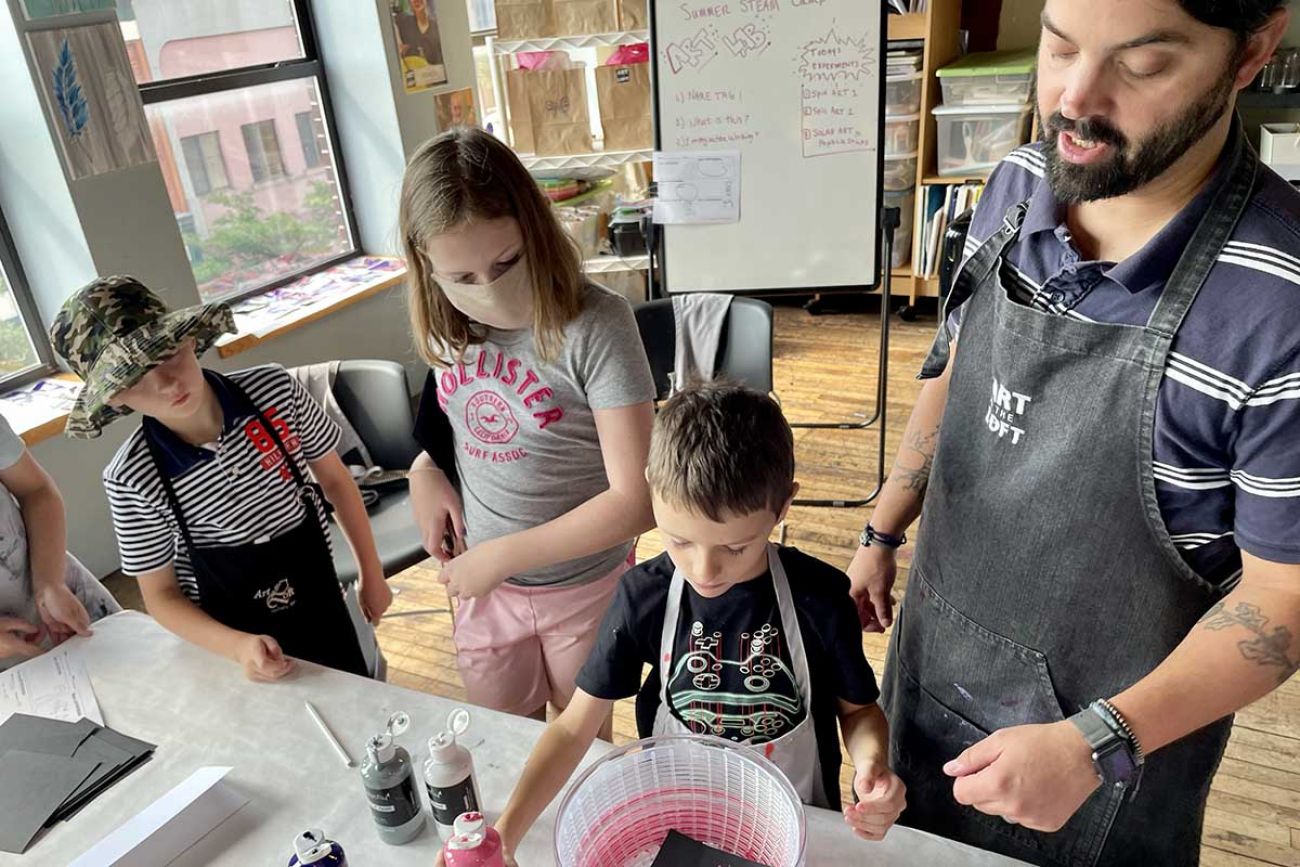
“I hope kids leave here with a love of art and that they can see connections with art in all they do – science, English, writing, math,” said Christiansen-Cooper, executive director of Art in the Loft and a former Denver teacher.
His program is one of several federal programs the district hopes will help students recover from learning losses they suffered during the pandemic.
“My goal for the summer was to let kids have fun with hands-on experiences that can help them re-engage with school,” said Meghan Gauthier, Alpena’s assistant superintendent for instruction.
That was a real priority for the district, she said, and it wouldn’t have happened without the massive influx of ESSER funds. The money allowed the district to boost pay enough to attract teachers who had intended to use the summer to decompress after a particularly stressful school year. Other districts Bridge visited also offered teacher incentives but none as high as Alpena, which paid $55 an hour for instructional time and $32 an hour for planning time.
Alpena received $10.4 million in COVID relief funding or about $2,950 for each of its 3,500 students.
“It’s a lot of money and we want to use it purposefully,” Gauthier said. “How do we leverage it, and be smart, and make sure to continue with COVID recovery but also think long-term when we’re talking about staffing, professional development, and all the things that are going to last” after the funding runs out.
One way is to give teachers and principals a say in how some money is spent. The district allocated $550,000 – about $150 per student – for school-based teams to spend on local needs in their buildings. One, for example, intends to use its money to hire a behavioral specialist to improve discipline.
Alpena spent about $700,000 last year to purchase access to online education programs for about 800 students who chose independent virtual learning. Another $25,500 per week went to pay teachers who mentored them, tracked their progress, and checked in with them at least weekly.
Alpena also used COVID relief funds to transport summer school students in a district that spans 600 square miles. It used other funding for professional development that will prepare teachers to accelerate lessons next year to make up for lost learning time. Alpena said it is also beefing up training in online delivery methods, Superintendent David Rabbideau said.
“We say, ‘I can’t wait to get back to normal,’ but there are some things we don’t necessarily want to go back to, like the idea that education has to be the way it was before — six hours a day sitting in a seat in a classroom,” he said. “We learned that while a lot of people struggled with remote learning there were a lot of people that were very successful.”
In Traverse City, summer learning that doesn’t feel like school
Madeline Ross adjusted her wide-brimmed hat and peered through the white veil covering her face. This isn’t her usual teaching attire, but this isn’t usual summer school in Traverse City, either.
“We’ve never really had the funds to have a robust elementary school summer program. We’re doing a lot more than we ever have,” Superintendent John VanWagoner said.
That’s thanks to $14.9 million in COVID relief funds, or about $1,655 for each of the district’s 9,000 students.
“I don’t think I ever told you about my pets. I have ten thousand of them,” Ross, a first-year teacher who lives on a farm told a summer school student at Traverse Heights Elementary.
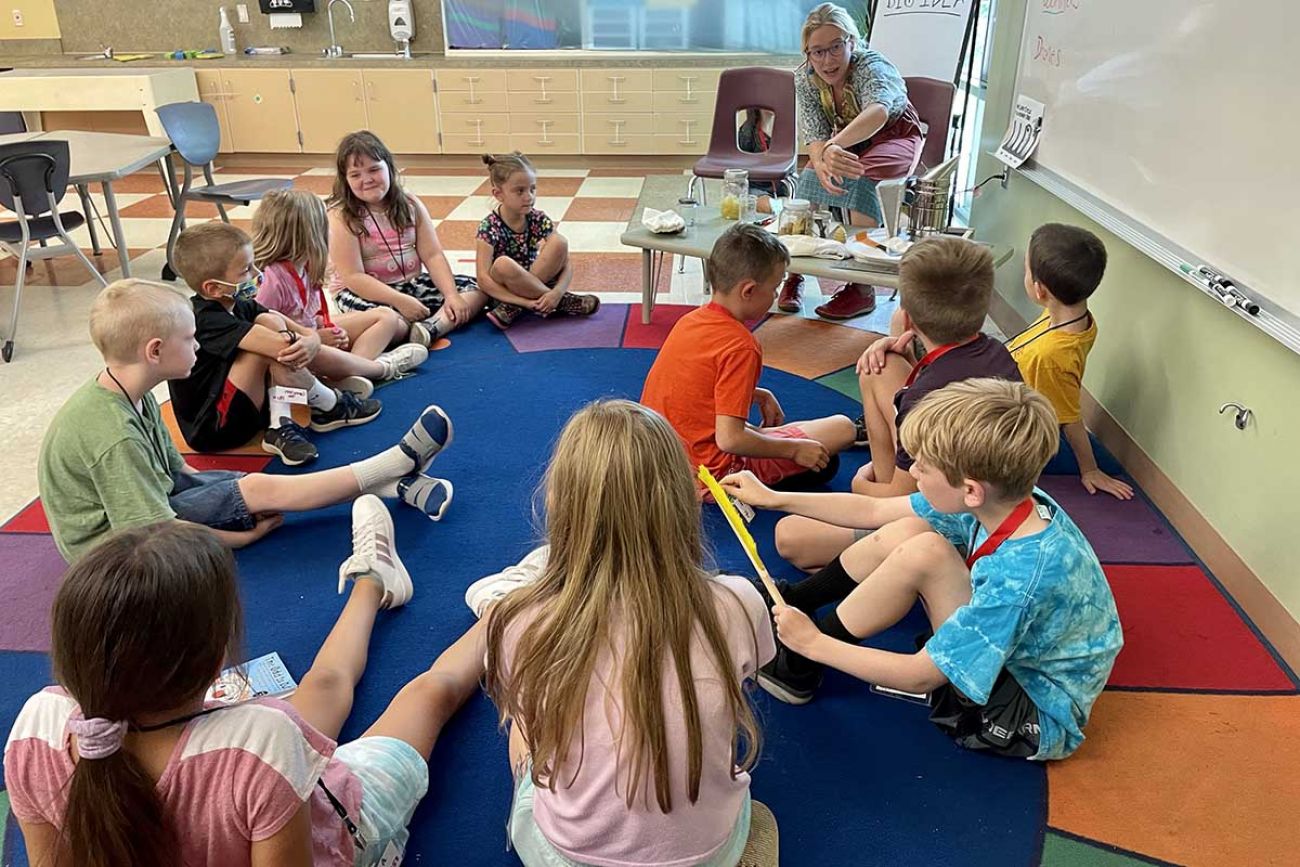
“Bees!” shouted a few students who recognized her beekeeping attire and noticed the hive smoker, jar of honeycomb and diagrams of drones laid out on a table.
“How do you think bees help me on my farm?” she asked.
Nine-year-old Kyla Lasi’s hand shot up. “They pollinate,” she said.
The lesson was part of the week’s focus on Michigan agriculture that also included a visit from Grand Traverse Land Conservancy and a chance to make homemade ice cream.
“I thought about designing a perfect program. It had to be engaging and feel so different than what students typically experience that they can’t wait to come. And then we’re going to sneak in some reading and math, and they’re not even going to realize they’re learning,” said Kirsten Morgan, summer school coordinator and principal at Blair Elementary School. “We’re watching kids learn in an authentic, joyful way.”
Traverse City is a wealthy district with pockets of poverty, said Morgan, who tried to pull as many children as she could out of those pockets and into summer school classrooms.
“What we experienced across our district is that the divide got even more pronounced during the pandemic. It got even wider,” as students – particularly those in high school – spent big portions of the school year learning online, she said.
“My deep fear is that if we don’t use these months in summer effectively there will be a generational impact for kids that aren’t able to hop right back on the treadmill and keep rolling,” she said. “A lot of our kids are going to be just fine but there is a population of students that are more profoundly impacted.”
Those are the students COVID-relief funds are meant to help.
Traverse City students spent the year moving back and forth between in-person and virtual learning as conditions of the pandemic changed. It was stressful but most teachers soon became adept at pivoting between the two or sometimes using both simultaneously.
The pandemic forced teachers and students to make changes that otherwise would have taken years to adapt to, and now VanWagoner wants to build on that by investing in technology, professional development and online learning management systems.
The flexibility allows students to transition seamlessly between online and in-person learning, he said. That’s important, not just during the uncertainty of a pandemic, but at other times when students might have to miss school.
“Parents are going to expect us to create these flexible systems for learning,” he said.
Niles students received new Chromebooks and reading and math supports
Videos loaded slowly. Programs crashed. The screen sometimes froze. Finally, the battery on his school-issued laptop stopped holding a charge.
“Then I just couldn’t do anything so I stopped trying,” said De’Mauri Dotson, 12. “Last year is the only year I did bad. I just couldn’t do it.”
De’Mauri’s mother, Kristy Pratt, knew he was struggling last year but was determined to keep him safe from COVID-19 so she kept him home. He enrolled in Niles Community School District’s fully online Virtual Viking program.
“I don’t think he really learned last year, and he’s a fast and great learner. It’s like last school year didn’t exist, but I have no doubt he’s going to catch up,” Pratt said.
About 20 percent of the district’s 3,400 students attended virtual school for at least half the year.
Federally funded in-person summer school is intended to help students like De’Mauri catch up. So are the 1,400 new Chromebooks the district bought with COVID relief funds. For the first time, every student in the district will have their own computer, and they’ll all work, too.
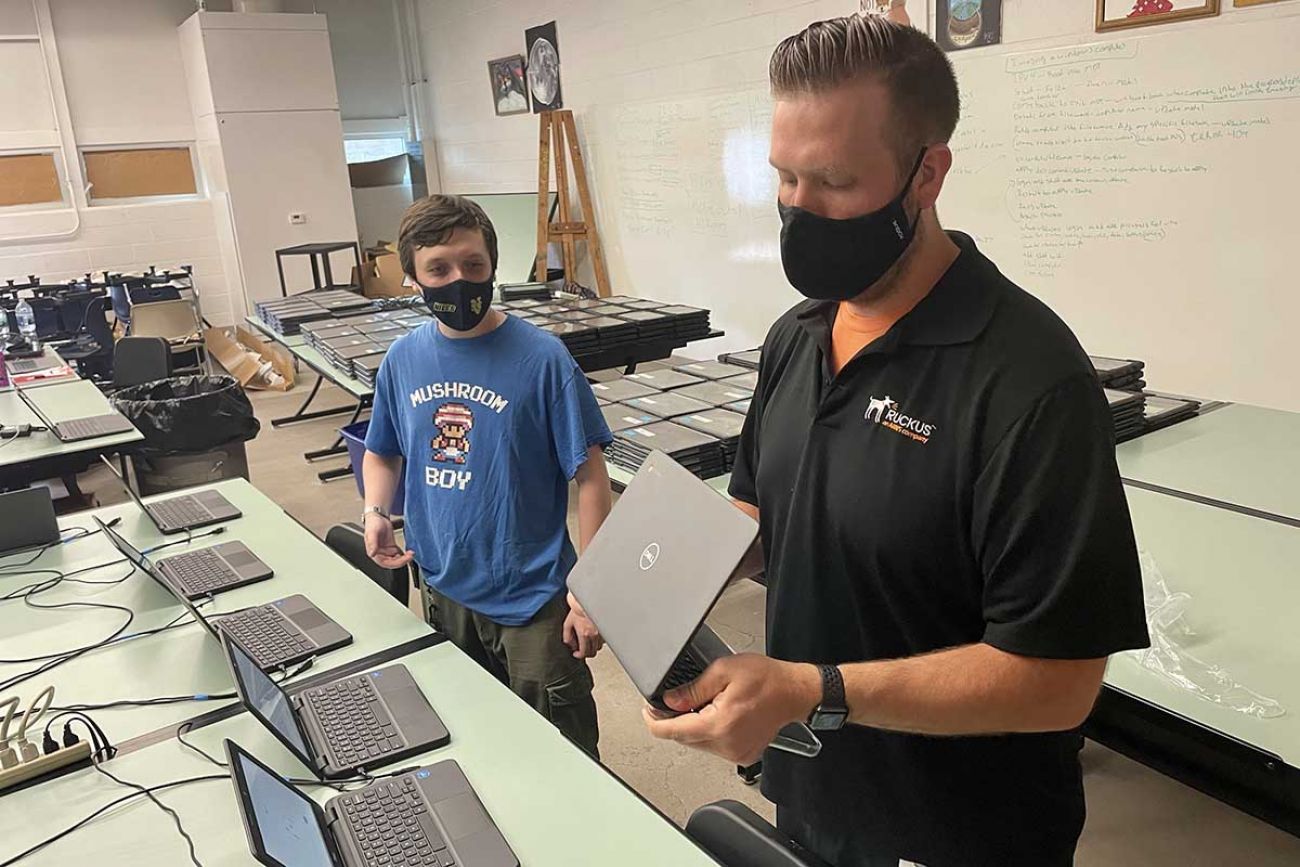
The district is scrapping its oldest laptops -- some more than seven years old.
“They probably really had reached their end of life two or three years ago,” said district computer technician Dan Napier, who somehow managed to keep them mostly functional through last school year.
Eighth-grader Shayla Peppers got to try her new Chromebook during summer school at Ring Lardner Middle School.
“It’s a lot faster” than the computer she was issued last year, she said. “The mouse actually moves.”
The Chromebooks aren’t just for virtual learners, though the district will continue to offer remote options for families who want it. Students will use the Chromebooks in classrooms, too.
“When we purchase curriculum materials we always get both print and digital resources,” said Ann Bingham, director of curriculum, instruction and assessment. “Forever we’ve had these digital materials but nobody used them,” she said. “How could they? They didn’t have” enough computers, she said.
Technology alone won’t erase the effects of the pandemic. That’s why the district is investing a lot of its $11 million in COVID-relief funds -- $3,200 per student -- in professional development, tutoring, reading and math interventionists, behavior specialists and summer school.
“We have more summer programming now than we ever have. We joked in central office that we were like Oprah giving away summer programs. ‘You get a summer program! You get a summer program! You get a summer program!’” Bingham said.
Children who weren’t able to attend got regular visits from “book fairies,” teachers who hand-selected books that would challenge young readers without frustrating them.
That seems to be a districtwide theme as teachers target lessons to individual needs of students who spend time each day in flexible learning pods where they can catch up on specific math or reading skills they lack.
“We know even the kids who were learning in person all year are going to need intervention,” Superintendent Dan Applegate said. “Our goal is to make sure we have interventions in place for the next two or three years,” he said. “It’s not going to be a one-year fix.”
Michigan Education Watch
Michigan Education Watch is made possible by generous financial support from:
Subscribe to Michigan Education Watch
See what new members are saying about why they donated to Bridge Michigan:
- “In order for this information to be accurate and unbiased it must be underwritten by its readers, not by special interests.” - Larry S.
- “Not many other media sources report on the topics Bridge does.” - Susan B.
- “Your journalism is outstanding and rare these days.” - Mark S.
If you want to ensure the future of nonpartisan, nonprofit Michigan journalism, please become a member today. You, too, will be asked why you donated and maybe we'll feature your quote next time!


